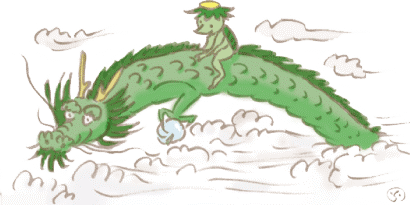 The Asaza Project utilizes the lake’s work (laws) of nature to revive the lake-wide ecology. Specifically, we use native water plants in the lake such as vulnerable asaza (floating heart or Nymphoides peltata of Menyanthoideae) (Fig. 4). Floating hearts, as their name indicates, make a large community by forming their numerous heart-shaped leaves on the lake surface. This community absorbs the force of lakeshore-washing waves, serving as breakwater to protect the reed field at the shoreside from wave erosion. At the same time, the floating heart community helps sand accumulation near it, which allows the growth of other communities including reeds. It is a natural capacity inherent in the waterside vegetation zones, and functions only when diverse water plant communities thrive continuously from the lakeshore toward offshore.
The Asaza Project utilizes the lake’s work (laws) of nature to revive the lake-wide ecology. Specifically, we use native water plants in the lake such as vulnerable asaza (floating heart or Nymphoides peltata of Menyanthoideae) (Fig. 4). Floating hearts, as their name indicates, make a large community by forming their numerous heart-shaped leaves on the lake surface. This community absorbs the force of lakeshore-washing waves, serving as breakwater to protect the reed field at the shoreside from wave erosion. At the same time, the floating heart community helps sand accumulation near it, which allows the growth of other communities including reeds. It is a natural capacity inherent in the waterside vegetation zones, and functions only when diverse water plant communities thrive continuously from the lakeshore toward offshore.
Our project denies forceful restoration of nature: we elicit the natural healing power of the lake where lakes revive by themselves. Although it certainly takes a good length of time to regenerate the reed field, this method can gradually but steadily revive the lake-wide ecology.
Furthermore, the importance of the project lies in its character that anyone can join the project through various activities, such as raising and planting seedlings (Fig. 5). The Asaza Foster Parent Program, where the floating heart seedlings are cultured for planting in the lake, has spread all over the catchment area with the elementary schools’ initiative. It is actually one of the qualities of our project that the environmental remediation and the environmental education are integrated together. By having an elementary school as the pivot in each community, children and grownups alike can strive toward the dream of “reviving Lake Kasumigaura”, and concurrently the entire community works to create a child-rearing environment. Human development for the future shares a crucial role in establishing a sustainable society. In order to expand the project to the entire lake, it is a prerequisite to allow participation of as many people as possible, whenever and wherever.
We proposed this project as a public eco-restoration work, in other words, an alternative plan to the conventional masonry/concrete breakwaters that require massive civil engineering works. It is indeed a citizen-initiated public works project.

>
5. Expansion to the Headwaters and Satoyama Forest Restoration









